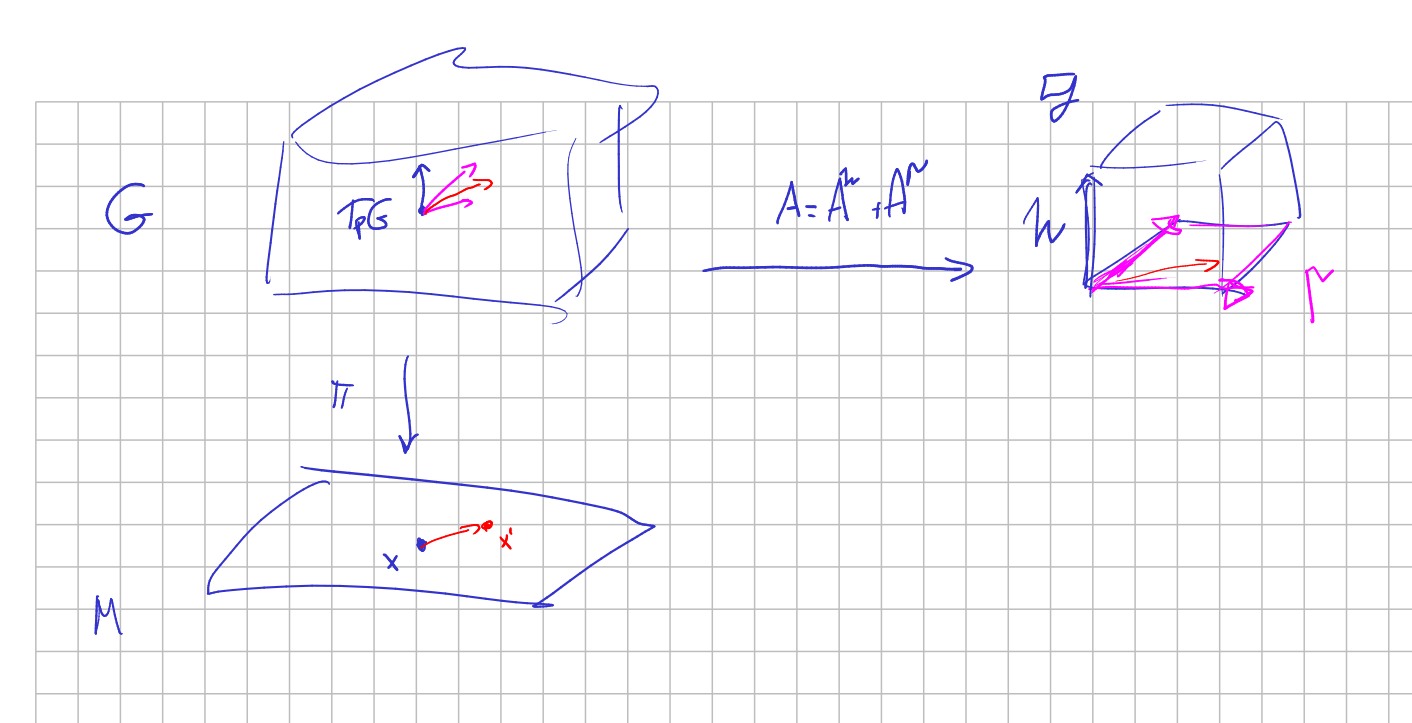In my struggle to understand Cartan/Klein geometries, I have the intuition that reductive Klein geometries are the link to connect the "classical" differential geometry approach with this "modern" approach. So I want to understand them better.
A Klein geometry $(G,H)$ with $M=G/H$ is called reductive if the Lie algebra $\mathfrak{g}$, seen as an $\operatorname{Ad}(H)$-module, can be decomposed as $$ \mathfrak{g}=\mathfrak{h}\oplus\mathfrak{p}, $$ with $\mathfrak g$ and $\mathfrak h$ being the corresponding Lie algebras.
I interpret a reductive Klein geometry like one in which there is a "canonical sense of translation". Let's focus on a point $x\in M$, we know that a vector $v\in \mathfrak g$ gives rise to a one-parameter subgroup of $G$ and, in particular, a fundamental vector field on $M$ that we can understand like a "little displacement" of $x$ to $x'\in M$. But several different elements of $\mathfrak g$ can give rise to the same "little displacement" at $x$.
If the Klein geometry is reductive you can fix a choice of $\mathfrak p$ and get a projection $f:\mathfrak g \to \mathfrak h$. This way, the Maurer–Cartan form $A$ of $G$ can be split $$ A=(f+\mathrm{id}-f)A=A^{\mathfrak h}+A^{\mathfrak p}. $$ The 1-form $\omega=A^{\mathfrak h}$ is the 1-form of a principal connection on the principal bundle $\pi:G\to G/H$, and $\ker(A^{\mathfrak h})$ describe the horizontal subspaces. For $\pi(p)=x$, the map $d\pi_p:\ker(A^{\mathfrak h}_p)\to T_{x}M$ is an isomorphism, since it is surjective, and dimensions agree. So we have the isomorphism$$ T_{x}M \xrightarrow{d\pi_p^{-1}}\ker(A^{\mathfrak h}_p)\xrightarrow{A^{\mathfrak p}_p} \mathfrak p. $$
The meaning of this isomorphism is to assign a "canonical" one-parameter group of transformations to a little displacement from $x$ to $x'\in M$.
This is clearly visualized for the Euclidean plane: given an infinitesimal translation (a tangent vector) of a point, there are "lots" of transformations tangent to this vector: the translation itself and an infinite number of rotations of different radius. But we have a canonical euclidean transformation associated.
My question is: is this what characterize the reductive Klein geometries? That is, given a Klein geometry in which there are isomorphism from every tangent space of the base manifold to a fixed subspace of $\mathfrak g$, and assuming that these isomorphisms are consistent (in a sense that I can't make precise yet), can we conclude it is a reductive Klein geometry? Can we say, loosely speaking, that reductive Klein geometries are those in which little displacements on $M$ can be associated canonically with special one-parameter subgroups of $G$?
Added: Once I know the answer is yes, I wonder if these "special one-parameter subgroup" will eventually be the geodesics of the geometry (whatever they are in this context). Should I expect geodesics to exist only if we are in a reductive geometry?

